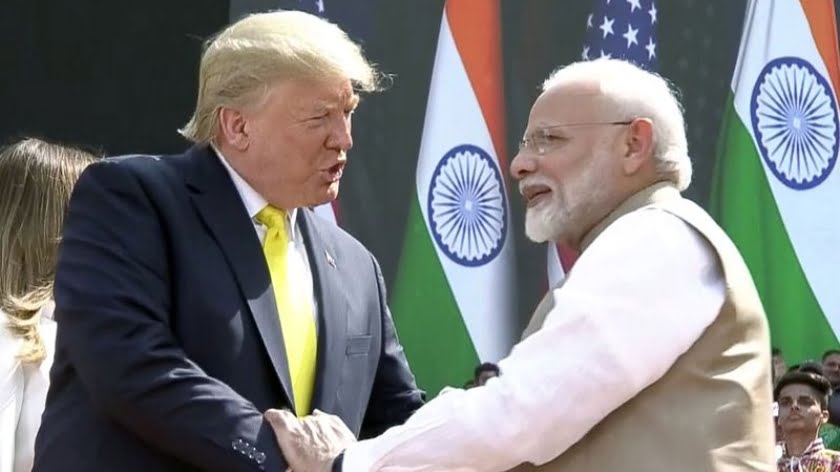Analyzing the ODNI’s Assessment of South Asia’s Interstate Conflict Potential
The dual-triangulation at play can be simplified as the US hoping to indirectly use India to “contain” China while at the same time relying on Pakistan to fulfill the same role vis-à-vis India. The US would be pleased if the Sino-Indo border dispute erupts into a serious conflict since it expects that this would complicate its Chinese rival’s rise, while an Indo-Pak one would serve the purpose of punishing India for refusing to become the Golden Billion’s largest vassal state.
The US’ Office of the Director of National Intelligence (ODNI) released its annual threat assessment on Thursday that was originally published for an internal audience early last month. Commentators across South Asia took note of the part about “Potential Interstate Conflict” since two out of the three that were briefly written about concern India, specifically a possible conflict with China or Pakistan, while the last involves Armenia-Azerbaijan. The resultant media reports about this risk driving hysteria, however.
Some articles omit, whether deliberately or not, that the ODNI isn’t making a prediction that India will go to war with one or both of its identified neighbors sometime across the coming year. As the report itself clarifies, which presumably few casual media consumers actually searched out to read for themselves, “The following are a few of the potential conflicts between states that could spillover with repercussions that may require immediate U.S. attention.” Here are the two relevant scenarios:
“India–China
While India and China have engaged in bilateral border talks and resolved border points, relations will
remain strained in the wake of the countries’ lethal clash in 2020, the most serious in decades. The
expanded military postures by both India and China along the disputed border elevate the risk of armed
confrontation between two nuclear powers that might involve direct threats to U.S. persons and interests, and calls for U.S. intervention. Previous standoffs have demonstrated that persistent low-level friction on the Line of Actual Control (LAC) has the potential to escalate swiftly.
India–Pakistan
Crises between India and Pakistan are of particular concern because of the risk of an escalatory cycle between two nuclear-armed states. New Delhi and Islamabad probably are inclined to reinforce the current calm in their relationship following both sides’ renewal of a cease-fire along the Line of Control in early 2021.
However, Pakistan has a long history of supporting anti-India militant groups, and under the leadership of Prime Minister Narendra Modi, India is more likely than in the past to respond with military force to perceived or real Pakistani provocations. Each side’s perception of heightened tensions raises the risk of conflict, with violent unrest in Kashmir or a militant attack in India being potential flashpoints.”
In view of the above, it’s clear that there’s no reason for average folks to be concerned about a conflict breaking out in either South Asian direction, though the threat still continues to exist. Several intriguing observations can be made from the ODNI’s latest report, however. Regarding the India-China scenario, it’s interesting that the authors mentioned that it “might involve direct threats to U.S. persons and interests, and calls for U.S. intervention.”
They were deliberately ambiguous, but they’re probably implying that Washington could use the pretext of its nationals residing in either country to diplomatically involve itself in their standoff/conflict in the event that it isn’t already officially invited to do so by one of them. Curiously, no related language exists with respect to the India-Pakistan scenario since there’s no mention that it “might involve direct threats to U.S. persons and interests, and calls for U.S. intervention.”
One can only speculate for the reason behind the omission, but it might be that the US is hinting that it would be inclined to at the very least politically support India over China (irrespective of whether Delhi asks it to) should those two clash while likely remaining neutral in an Indo-Pakistani clash. The ODNI doesn’t expect that second pair’s ceasefire to end anytime soon, but even if Islamabad unilaterally does so through support for a serious anti-Indian attack, the US will still likely stay on the sidelines.
There are three larger contexts within which the preceding military-strategic calculations are being suggested in the US’ latest annual threat assessment: 1) New Cold War competition is intensifying between the Golden Billion and the Sino-Russo Entente; 2) India is rapidly rising as a globally significant Great Power that’s truly independent of those two aforementioned de facto blocs; and 3) Pakistan remains firmly within the US’ “sphere of influence” after last April’s post-modern coup.
Considering these factors, there’s a certain logic inherent in the US at the very least politically supporting India over China (irrespective of whether Delhi asks it to) should those two clash while remaining neutral in an Indo-Pakistani clash even if the latter provokes it like the ODNI seems to expect. The dual-triangulation at play can be simplified as the US hoping to indirectly use India to “contain” China while at the same time relying on Pakistan to fulfill the same role vis-à-vis India.
The US would be pleased if the Sino-Indo border dispute erupts into a serious conflict since it expects that this would complicate its Chinese rival’s rise, while an Indo-Pak one would serve the purpose of punishing India for refusing to become the Golden Billion’s largest vassal state. For whatever US policymakers might be fantasizing about as intuited by an analysis of the latest ODNI report, neither set of conflicts can be taken for granted, nor is it guaranteed that they’d serve US interests if they break out.







